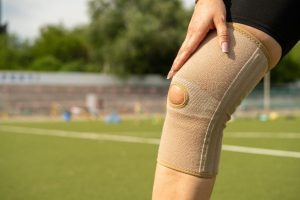Migraines are more than just headaches; they can significantly impact daily life, causing intense pain, sensitivity to light and sound, nausea, and other debilitating symptoms. While many people turn to medication for relief, physical therapy offers a holistic approach that addresses the root causes of migraines.
Key Takeaways:
- Physical therapy offers a holistic approach to managing migraines by addressing underlying musculoskeletal issues, tension, and postural imbalances that may contribute to migraine symptoms.
- Techniques such as manual therapy, postural correction, relaxation exercises, and education on lifestyle modifications can help reduce the frequency and severity of migraines, providing long-term relief and improving quality of life.
- Physical therapy is particularly beneficial for various types of migraines, including tension-type migraines, cervicogenic migraines, migraines with musculoskeletal triggers, postural migraines, and vestibular migraines.
In this article, we’ll delve into how physical therapy can be an effective treatment option for managing migraines.
Can physical therapy help migraines?
Migraines are a complex neurological condition characterized by recurrent episodes of moderate to severe headaches, often accompanied by other symptoms such as nausea, vomiting, and sensitivity to light and sound. They can last for hours or even days, significantly impacting a person’s quality of life.
Physical therapy can be beneficial for various types of migraines, particularly those that are influenced by musculoskeletal imbalances, tension, and postural issues. Here are some specific types of migraines for which physical therapy may be particularly effective:
Tension-type headaches
These migraines are often associated with muscle tension in the neck, shoulders, and upper back. Physical therapy techniques such as massage, myofascial release, and relaxation exercises can help alleviate muscle tension and reduce the frequency and severity of tension-type migraines.
Cervicogenic migraines
Cervicogenic migraines originate from the neck or upper cervical spine. They are often triggered or worsened by poor posture, neck stiffness, or muscle imbalances.
Physical therapy interventions such as manual therapy, postural correction, and specific exercises targeting the neck and upper back can help address the underlying cervical spine issues and alleviate cervicogenic migraines.
Vestibular migraines
Vestibular migraines are characterized by symptoms of dizziness, vertigo, and balance disturbances, along with migraine headaches. Physical therapy interventions, including vestibular rehabilitation exercises and balance training, can help improve vestibular function, reduce dizziness and vertigo, and alleviate associated musculoskeletal symptoms.
By addressing vestibular dysfunction and promoting better balance and proprioception, physical therapy can contribute to the management of vestibular migraines and improve overall functional outcomes.
Migraines with musculoskeletal triggers
Some individuals may experience migraines triggered by specific musculoskeletal factors such as temporomandibular joint (TMJ) dysfunction, cervical spine misalignment, or muscle tension in the jaw, neck, or shoulders (if you’re experiencing headaches resulting from TMJ, see our full article on physical therapy techniques for TMJ).
Physical therapy can address these triggers through targeted interventions, including manual therapy techniques, jaw exercises, and posture correction.
Migraines associated with stress and tension
Stress and tension are common triggers for migraines. Physical therapy can help individuals manage stress more effectively through relaxation techniques such as deep breathing, progressive muscle relaxation, and mindfulness. By reducing overall stress levels and promoting relaxation, physical therapy may help prevent stress-induced migraines.
Postural migraines
Poor posture, especially in the neck and upper back, can contribute to muscle tension and trigger migraines. Physical therapy aims to correct postural imbalances and improve alignment, reducing strain on the muscles and joints. By addressing postural issues, physical therapy can help prevent postural migraines and alleviate associated symptoms.
It’s important to note that the effectiveness of physical therapy for migraines may vary depending on individual factors such as the underlying causes of migraines, the severity of symptoms, and the patient’s response to treatment. A thorough assessment by a qualified physical therapist can help determine the most appropriate approach for each individual.
How is a migraine treated by physical therapy
Physical therapists employ a variety of techniques to help manage migraines and alleviate symptoms. These may include:
Manual therapy
Hands-on techniques such as massage, joint mobilization, and myofascial release can help reduce muscle tension and improve blood flow, alleviating headache symptoms.
Postural correction
Poor posture can contribute to muscle tension and trigger migraines. Physical therapists assess and correct posture to relieve strain on the muscles and joints, reducing the frequency of migraine attacks.
We also often prescribe various exercises, stretches, and mobility drills to address the postural issue directly. Many patients report relief from some of these interventions alone.
Exercise prescription
Specific exercises targeting the neck, shoulders, and upper back can strengthen weak muscles and improve flexibility, reducing the likelihood of tension-induced migraines.
One of our favorite benefits of physical therapy is that the exercise program is yours forever! You can continue to perform the exercises that you feel are beneficial for years to come, and come in for periodic check-ups with the physical therapist long after the initial bout of physical therapy is over, if you wish!
Relaxation techniques
Stress and tension are common triggers for migraines. Physical therapists may teach relaxation techniques such as deep breathing, progressive muscle relaxation, and mindfulness to help patients manage stress more effectively.
Education and lifestyle modification
Physical therapists provide education on ergonomics, proper body mechanics, and lifestyle modifications to help prevent migraine triggers and promote overall wellness.
Traditional treatments vs. physical therapy for migraines
Traditional treatments for migraines often involve medication to alleviate symptoms and prevent future attacks. While medication can be effective for many individuals, it may not address the underlying causes of migraines.
Physical therapy approaches migraines from a holistic perspective, focusing on identifying and addressing musculoskeletal imbalances, postural issues, muscle tension, and other contributing factors.
By targeting these underlying issues, physical therapy aims to reduce the frequency and severity of migraine attacks, ultimately improving the patient’s overall well-being.
Benefits of physical therapy for migraines
There are several benefits to incorporating physical therapy into a migraine treatment plan:
- Drug-Free Approach: Physical therapy offers a non-pharmacological alternative or complement to medication, reducing the reliance on painkillers and their potential side effects.
- Individualized Treatment: Physical therapy programs are tailored to each patient’s specific needs, addressing their unique musculoskeletal imbalances and triggers for migraines.
- Long-Term Relief: By addressing underlying issues and promoting healthy habits, physical therapy aims to provide long-term relief from migraines, rather than just temporary symptom management.
- Improved Quality of Life: By reducing the frequency and severity of migraine attacks, physical therapy can significantly improve the patient’s quality of life, allowing them to engage in daily activities with greater ease and comfort.
Final thoughts
While medication can provide relief from migraine symptoms, physical therapy offers a comprehensive approach that addresses the underlying causes of migraines.
By incorporating techniques such as manual therapy, postural correction, exercise prescription, relaxation techniques, and education, physical therapists help patients manage their migraines more effectively and improve their overall well-being.
If you’re ready to address the root cause of your migraines, consider consulting with a physical therapist to explore how physical therapy can benefit you.

















